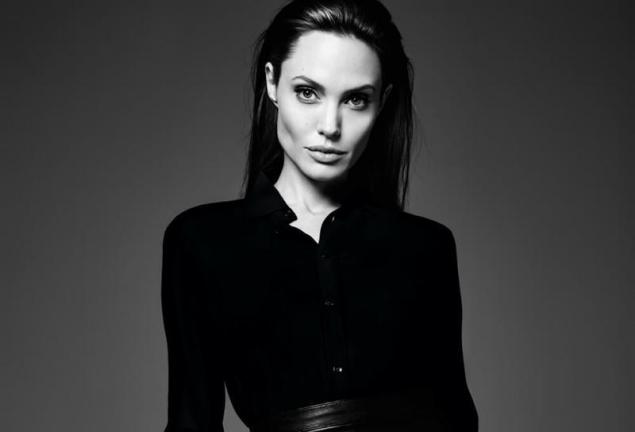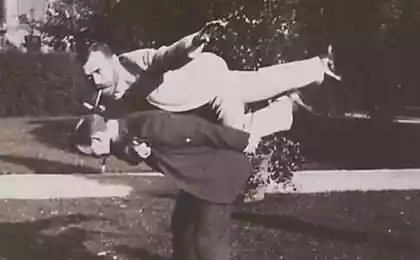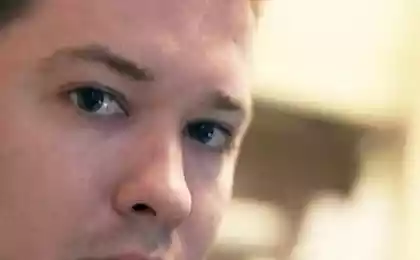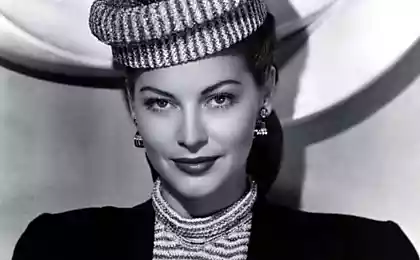497
Alexander Markov: Why what we think is beautiful, and something-no
When we see something beautiful — the neurons in our brains secrete endorphins, and we feel pleasure. But why? About this in his book "the Evolution of man: monkeys, bones and genes," says well-known Russian biologist and popularizer of science Alexander Markov.
Our sense of beauty — a very simple phenomenon that consists of many different factors. For example, the human body we believe is beautiful, if it instinctively shows us about the quality of the individual gene pool: "a Beautiful woman will give birth to strong and healthy children." Those who didn't like "beautiful" outward signs — chose "ugly" (read — sick, not strong enough, not fertile, weak, not tough, etc.) partners, their offspring were weaker or not born at all, and because such people were weeded out sexual selection, and with them the genes of the misunderstanding of beauty" and "ugliness".

A very reliable indicator of fitness" both human and other animals — symmetry. The symmetric body and face, so as a rule, healthier, stronger individual, in its smaller genome of harmful mutations. Symmetry is generally the most important factor that determines whether a person is beautiful or not, this is evidenced by numerous experiments.
That's probably why we like objects of regular shape, and we consider them beautiful, especially if they are skilled enough symmetry, complex and slightly imperfect — for example, snowflakes. And it is the symmetry, of course, is one of the main motives of fine arts.
Interestingly, a love of all things symmetrical, probably rooted in ancient times. It might be thought looking at the form of the Acheulian chopping — it. The Paleolithic people have spent so much time and effort to give them a regular, symmetrical shape! For what? After all, the knife can be anything — would have been a sharp tip and cutting edge. Form it is like the fangs of predators, maybe they were their type? However, the canines usually are usually curved. Ancient masters did their straight lines, with proper bilateral symmetry. Some researchers suggest that symmetrical forms of the Acheulean chopping at the time was sort of a "fitness indicator" for the erectus and heidelbergnew, so could even be maintained by sexual selection.
There is another concept in the theory of evolution, which helps to understand why in our inherent sense of beauty. It is called the idea of "sensory bias or sensory drive. A living being, first of all, you need to survive and to leave offspring, so our perception must be selective — only faster it must allocate from the outside world the information that we need for survival and reproduction. If our perception would be comprehensive, objective and not selective — it would require huge resources of our body, and ultimately proved to be ineffective.
Alexander Markov: "Energy reaction" is based on motivation, and motivation in animals is inseparable from emotion. If we want to manipulate the emotions of some animal (e.g., human), you should present him with such incentives, which his brain in the course of evolution adapted to react most violently". So, perhaps that is why in such bright colors painted the wings of butterflies — because the eyes of butterflies for millions of years, "tuned" the perception of vibrant colors — a source of food, so if the prospective marriage partner will have dull wings — he simply did not notice him.
It is interesting that, in order to influence someone enough to show him the so-called Severstal. In order to understand this, imagine that you are gathering berries in the forest. After you have spent the whole day to gather up a good bucket of cranberries — what you will see first thing when I get home, enthusiastically lay down on the sofa and close your eyes? Of course the cranberries! Moreover, with a large Bush, with the largest and red berries, which are actually, probably, does not happen. This Bush — the ideal image of the goal all day was looking for your eyes. "And he (Bush — NS) seems so real, so real that the psychological roots of idealism no longer look so strange", — says Markov. So if someone suddenly wants to make you the strongest impression at this point — he should show you this sprinkled with large berries Bush cranberries.
That is why the "Paleolithic Venuses" — many prehistoric statuettes of women that have common attributes (many depicted fat, incredibly Busty or pregnant), Dating from the upper Palaeolithic (about 40-12 thousand years ago) — it is also "severstali". When a man of the upper Paleolithic era looked at these figures — his brain was identified endorphins, oxytocin and other hormones. Of course these figures could serve some other role could, for example, to be a symbol of fertility, but overstimulate from this, they have never stopped.
And endorphins are highlighted when we experience stress or a fright.
"Maybe that's why Paleolithic artists seemed fine (and seem) not only to large herbivores, the potential prey, a reminder of the exciting hunting scenes, but the silhouettes of dangerous predators," concludes Alexander Markov. published
P. S. And remember, just changing your mind — together we change the world! ©
Join us in Facebook , Vkontakte, Odnoklassniki
Source: naked-science.ru/article/nakedscience/what-is-beauty
Our sense of beauty — a very simple phenomenon that consists of many different factors. For example, the human body we believe is beautiful, if it instinctively shows us about the quality of the individual gene pool: "a Beautiful woman will give birth to strong and healthy children." Those who didn't like "beautiful" outward signs — chose "ugly" (read — sick, not strong enough, not fertile, weak, not tough, etc.) partners, their offspring were weaker or not born at all, and because such people were weeded out sexual selection, and with them the genes of the misunderstanding of beauty" and "ugliness".

A very reliable indicator of fitness" both human and other animals — symmetry. The symmetric body and face, so as a rule, healthier, stronger individual, in its smaller genome of harmful mutations. Symmetry is generally the most important factor that determines whether a person is beautiful or not, this is evidenced by numerous experiments.
That's probably why we like objects of regular shape, and we consider them beautiful, especially if they are skilled enough symmetry, complex and slightly imperfect — for example, snowflakes. And it is the symmetry, of course, is one of the main motives of fine arts.
Interestingly, a love of all things symmetrical, probably rooted in ancient times. It might be thought looking at the form of the Acheulian chopping — it. The Paleolithic people have spent so much time and effort to give them a regular, symmetrical shape! For what? After all, the knife can be anything — would have been a sharp tip and cutting edge. Form it is like the fangs of predators, maybe they were their type? However, the canines usually are usually curved. Ancient masters did their straight lines, with proper bilateral symmetry. Some researchers suggest that symmetrical forms of the Acheulean chopping at the time was sort of a "fitness indicator" for the erectus and heidelbergnew, so could even be maintained by sexual selection.
There is another concept in the theory of evolution, which helps to understand why in our inherent sense of beauty. It is called the idea of "sensory bias or sensory drive. A living being, first of all, you need to survive and to leave offspring, so our perception must be selective — only faster it must allocate from the outside world the information that we need for survival and reproduction. If our perception would be comprehensive, objective and not selective — it would require huge resources of our body, and ultimately proved to be ineffective.
Alexander Markov: "Energy reaction" is based on motivation, and motivation in animals is inseparable from emotion. If we want to manipulate the emotions of some animal (e.g., human), you should present him with such incentives, which his brain in the course of evolution adapted to react most violently". So, perhaps that is why in such bright colors painted the wings of butterflies — because the eyes of butterflies for millions of years, "tuned" the perception of vibrant colors — a source of food, so if the prospective marriage partner will have dull wings — he simply did not notice him.
It is interesting that, in order to influence someone enough to show him the so-called Severstal. In order to understand this, imagine that you are gathering berries in the forest. After you have spent the whole day to gather up a good bucket of cranberries — what you will see first thing when I get home, enthusiastically lay down on the sofa and close your eyes? Of course the cranberries! Moreover, with a large Bush, with the largest and red berries, which are actually, probably, does not happen. This Bush — the ideal image of the goal all day was looking for your eyes. "And he (Bush — NS) seems so real, so real that the psychological roots of idealism no longer look so strange", — says Markov. So if someone suddenly wants to make you the strongest impression at this point — he should show you this sprinkled with large berries Bush cranberries.
That is why the "Paleolithic Venuses" — many prehistoric statuettes of women that have common attributes (many depicted fat, incredibly Busty or pregnant), Dating from the upper Palaeolithic (about 40-12 thousand years ago) — it is also "severstali". When a man of the upper Paleolithic era looked at these figures — his brain was identified endorphins, oxytocin and other hormones. Of course these figures could serve some other role could, for example, to be a symbol of fertility, but overstimulate from this, they have never stopped.
And endorphins are highlighted when we experience stress or a fright.
"Maybe that's why Paleolithic artists seemed fine (and seem) not only to large herbivores, the potential prey, a reminder of the exciting hunting scenes, but the silhouettes of dangerous predators," concludes Alexander Markov. published
P. S. And remember, just changing your mind — together we change the world! ©
Join us in Facebook , Vkontakte, Odnoklassniki
Source: naked-science.ru/article/nakedscience/what-is-beauty
Effective treatment of the kidneys and bladder: the advice of traditional medicine
Stunning photos of horses from Tim fluck























